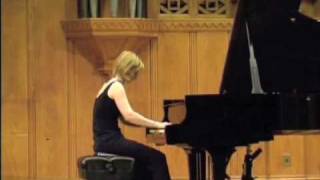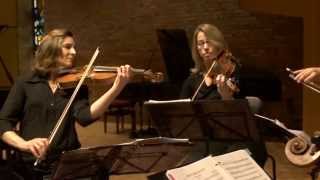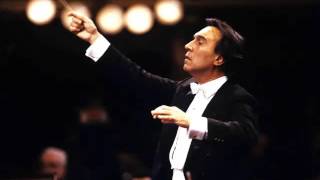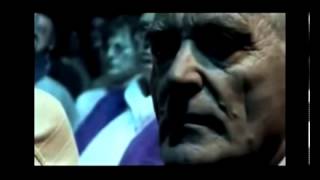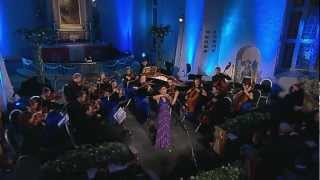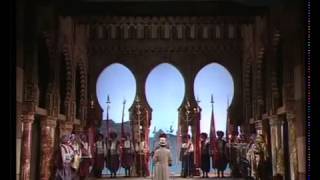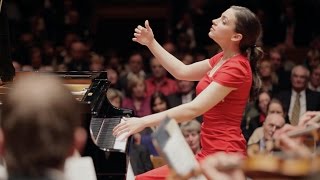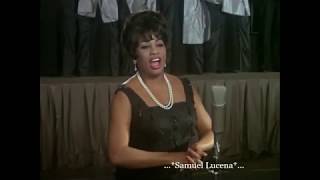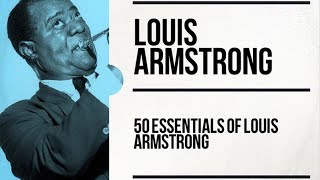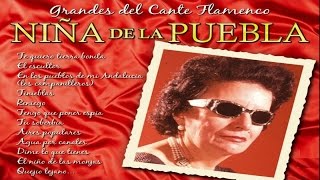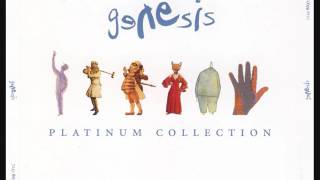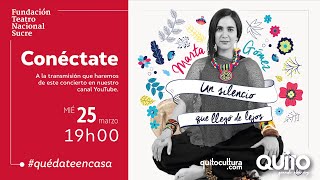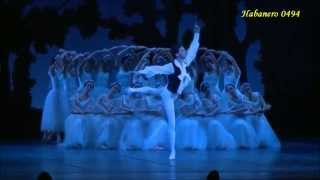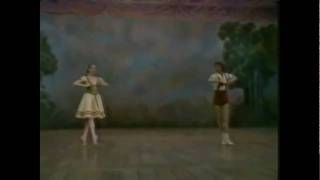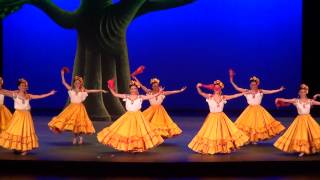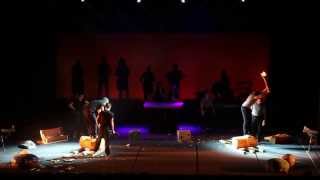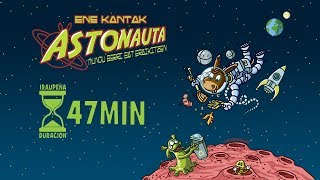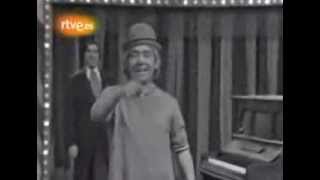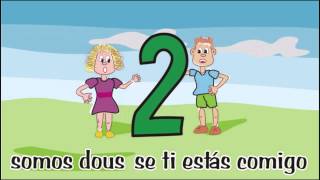February 29, 1792 Rossini's birth
March 1, 1810 Chopin's birth
March 3, 1976 Massacre in Vitoria/Gasteiz
Recommended music videos for initiation to classical music
Frédéric Chopin (1810-1849) was a virtuoso Polish pianist and composer; as a pianist, he is considered one of the most important in history and as a composer, as one of the benchmarks of Romanticism . He was born into a vocationally musical family; his mother played the piano and his father the violin and flute; His first teacher was a sister of his with whom he liked to play pieces with four hands. At the age of eight he gave his first public concert in the palace of the Radziwill family in Warsaw . Chopin 's work focuses exclusively on the piano, solo or concertante, with which he embarked on a solo career of technical perfection, expressive splendor and deepening in the rubato until he became the musical benchmark for that instrument.
The piano is a harmonic musical instrument classified as a percussed string instrument ; It is made up of a sound box to which a keyboard has been added through which the steel strings are struck with felt-covered hammers, producing the sound. It was invented around the year 1700 by the Paduan Bartolomeo Cristofori . The word piano derives from the original Italian word for the instrument, pianoforte (piano: "soft" and forte: "strong"); this refers to the ability of the piano to produce sounds with different intensities, depending on the weight applied to the keys. This feature set it apart from its predecessors such as the zither, monochord, dulcemele, clavichord and harpsichord which could only produce a single volume.
Frédéric Chopin 's Piano Sonata No. 2 , Op. 35, written in the key of B flat minor, is articulated in four movements and contains one of its author's most famous pages; It is about the Funeral March , which we suggest today, composed in 1837 as an independent work; although in 1839 it was included in sonata no. 2 as its third movement . With a tripartite structure ( A -B- A ) written in slow air, this famous lugubrious march is exciting and solemn. Although the central section (2'22'') is a consoling contrast to its beautiful melody, it is the sublimated memory of the missing person; the return (4´26´´) to the initial section completes this impressive page. Today it is offered to us by the Russian pianist Elena Doubovitskaya.
Franz Joseph Haydn (1732-1809), Austrian composer whose brother Michael Haydn was also a notable composer, was one of the main pillars on which classicism (1750-1810) was based. At the age of six he began his studies on the harpsichord and violin. At the age of eight he was admitted as a chorister at St. Stephen's Cathedral in Vienna where he continued his musical studies. After changing his voice, he had to survive by working multiple jobs, while studying composition by analyzing the works of Carl Philipp Emanuel Bach . He maintained a close friendship with Mozart and was a teacher of Beethoven . He established the main bases of the sonata form and the formal structure of the string quartet and the symphony. He died at the age of 77 in Vienna .
String Quartet La Alondra Op. 64. No. 53. Of the sixty-eight string quartets that Joseph Haydn wrote, this is one of the most popular; Its nickname, La Alondra , derives from the first movement and its beautiful melody that we offer today in a performance by the female Lark Quartet .
Gioachino Rossini (1792-1868) was an Italian composer of 39 operas, various songs, some piano works, and some sacred music. He began composing at the age of 12. In 1812 he was hired by La Scala in Milan where he achieved a memorable success with "La piedra de toque" ; the following year he premiered his first opera seria, Tancredi , in Venice , and shortly afterwards he premiered another great success, The Italian in Algiers . In 1815 he settled in Naples where he wrote regularly and without stress with essays and regulated dates. In 1822 he moved to Vienna where he got to know the admired Beethoven . From Vienna to London , back to Paris and after the premiere of his last opera, Guillermo Tell , he left the opera at the height of his economic and popularity boom at the age of 37. He passed away at the age of 77.
Overture is the instrumental introduction of an opera or other dramatic work, musical or not; although some independent instrumental compositions of the 19th and 20th centuries were also called overtures by their composers. The first operas dating from the early seventeenth century , did not have overtures but an introduction made by the vocalists in which they made a summary of the action that was going to take place immediately afterwards. Instrumental introductions began to be used regularly in the mid- 17th century ; the German composer Christoph Willibald Gluck was one of the first to use material from his operas for overtures. In this way, they established the emotional profile of the opera that followed.
Today we offer some of his most popular overtures by the long-awaited maestro Claudio Abbado (1933-2015), an Italian conductor considered one of the greatest of our time: I (00:00) LA GAZZA BARKS .-. II (08:57) IL BARBIERE DI SIVIGLIA .-. III (16:11) IL SIGNOR BRUSCHINO .-. IV (20:35) L'ITALIANA IN ALGERI .-. V (28:23) LA SCALA DI SETA .-. VI (34:18) SEMIRAMIDE.-. VII (46:14) GUGLIELMO TELL
Lluis Llach (1948) is a Catalan singer-songwriter who promotes the Nova cançó catalana along with other colleagues and author of various protest songs in the Franco era. In 1969 he offered a solo recital at the Palau de la Música, making his popularity among the population of all ages manifest. In 1973 he performed at the Olimpia in Paris with great public and critical success; at this time he also performed in Switzerland, Germany and Mexico . In 1976, after the death of the dictator, he offered three recitals at the Palacio de Deportes de Montjuïc. In 1979 he was the first non-operatic singer to perform at the Barcelona Lyceum and in 1985 he filled the Camp Nou with more than 100,000 spectators. In 2007 he decided to end his career at a concert offered in Verges (Girona).
Bells to Morts . On March 3, 1976, at 5:10 p.m., the National Police evicted the Church of San Francisco de Asís in Vitoria-Gazteiz where 4,000 striking workers were gathered in assembly; To do this, he used tear gas, rubber bullets, and live ammunition, killing five people and injuring more than one hundred and fifty; In the protests that followed the massacre, the repression of them ended the lives of two other people. The facts, despite these 46 years that have elapsed, have not yet been prosecuted or investigated. In memory of this massacre, Lluis Llach composed the song that we offer today, performed by himself.
Recommended classical music videos
Giuseppe Tartini (1692-1770) was an Italian virtuoso violinist and composer who was born in Pirán , then the Republic of Venice , and today Slovenia . He had an eventful youth because after marrying his beloved Elisabetta Premaore he was accused of having kidnapped her, so she was admitted to a convent while he fled; after wandering from one place to another, he found refuge in the Convent of San Francisco , in Assisi , where he deepened his studies and violin technique; after a few years he managed to meet again with Elisabetta and work as a violinist at the Ancona theater. In 1726 he moved permanently to Padua where he was hired by the Basilica of San Antonio and two years later he created the Scuola delle Nazioni for violin, which was attended by instrumentalists from all over Europe .
The Devil's Sonata , or “El Trino del Diablo”, a violin sonata in G minor, was written by Tartini for violin and continuo; although today we offer it arranged for solo violin and string orchestra. Written in the Baroque period, its formal structure does not, of course, conform to the later rules of classicism; although the alternation of the “slow-fast” and the cadenza of the soloist is already verified shortly before the final bars. Its name comes from the technical difficulty that its interpretation required for the time in which it was written.
The opera (from the Latin opera, plural of opus, "works") is a musical genre that combines instrumental music, generally performed by an orchestra, and a dramatic written text -expressed in the form of a libretto- performed vocally by singers of diverse styles. range: mainly, soprano, mezzo-soprano and contralto for the feminine and tenor register, baritone and bass for the masculine, in addition to the so-called white voices (those of children) or falsetto (castrato, contratenor). Usually, the instrumental part contains overtures, interludes, and musical accompaniments; while the sung part can be a chorus, a solo, duet, trio or different combinations and with different structures such as the recitative or the aria.
It is also worth noting that there are various genres, such as classical opera, chamber opera, operetta, musical, singspiel and zarzuela . On the other hand, as in theater, there is a dramatic opera ( opera seria ) and a comic opera ( opera bufa ), as well as a hybrid between the two: the dramma giocoso . As a multidisciplinary genre, opera brings together music, singing, dance, theatre, set design, acting, costumes, make-up, hairdressing and other artistic disciplines. It is therefore a work of collective creation, which is essentially based on a librettist and a composer, and where the vocal performers play a fundamental role, but where the musicians and the conductor, the dancers, the creators of the sets are equally essential. and costumes, and many other figures.
The Italian in Algiers is an opera in two acts with music by Gioachino Rossini and a libretto in Italian by Angelo Anelli , based on an earlier text set to music by Luigi Mosca . The music is characteristic of Rossini's style, notable for its fusion of sustained energy with elegant, pristine melodies. It tells the story of Isabella , an Italian woman who went to Algeria to free her lover, Lindoro , a slave to a very powerful man in the country, Mustafa . The heroine also tried to help in the marital relationship between Mustafá and his wife, Elvira . Today's performance is given by Doris Soffel, Robert Gambill, Günter von Kannen, Enric Serra, Nuccia Focile, Susan McLean, Rudolf Hartmann, Bulgarian Male Chorus and Radio-Sinfonieorchester Stuttgart all conducted by Austrian maestro Ralf Weikert .
The Concerto is a musical form written for one or more solo instruments accompanied by an instrumental ensemble. It was Vivaldi who established the fundamental bases of its structure with three movements ( I fast-II slow-III fast ) and presented as a dialogue between soloist(s) and the instrumental ensemble. Beginning with classicism (1750-1810), especially from the bases created by CPE Bach , the first movement is built following the patterns of the sonata form (exposition, development and re-exposition) , while the second and third movements adopt free and punctual forms. Frequently, at the end of the first and/or third movement, the soloists have a cadence without orchestral accompaniment with which they can show off their virtuosity.
Piano Concerto No. 1 in E minor, Op. 11, by Frédéric Chopin , was composed in the year 1830 and premiered on October 11, 1830, at the National Theater in Warsaw , with the composer as a soloist during one of the "farewell" concerts, before Chopin left Poland . The concert is structured in the three habitual movements of the time: I (0´15´´) ALLEGRO MAESTOSO .-. II (22´05´´) ROMANCE - LARGHETTO .- . III (33´40´´) RONDO - VIVACE. Today's version is offered to us by the Russian pianist Olga Scheps accompanied by the Polish Radio Chamber Orchestra conducted by the also Polish maestro Agnieszka Duczmal .
Giuseppe Verdi (1813-1901) was an Italian composer; he wrote 28 operas considered as a bridge from bel canto to verismo . He was born in Le Roncole near Busetto ; as a child he belonged to the church choir where he received organ lessons and at the age of ten his parents enrolled him in the Busetto Music School ; at the age of 19 he moved to Milan where he continued his studies. He sympathized with the popular movements that demanded the unity of an Italy divided by different European dynasties. To the point that they chanted “Viva Verdi” with the double meaning of Viva V ittorio E manuele R e D ' Italia . His are the most appreciated and most performed operas, such as Aida , La Traviata and Rigoletto , and his Requiem , which we must also include among his masterpieces.
The Requiem Mass or Mass for the Dead is a religious act that takes place immediately before the burial of the corpse. In this case, Verdi writes for solo vocal quartet, choir and orchestra, premiering it in honor of his friend Alessandro Manzoni on the anniversary of his death, May 22, 1874. For the structure of the work, he faithfully follows the liturgical parts.
Herbert von Karajan (1908-1989) born in Salzburg and considered by many critics as the best conductor in history, led the Berlin Philharmonic for 35 years. There are critics, however, who blame him for his megalomania and his conservatism when it comes to choosing a repertoire in which the innovative tendencies of his century were conspicuous by their absence. Another brown in his career was his compliance with the Third Reich , while the best directors of the time such as Bruno Walter , Otto Klemperer or Erich Kleiber went into self-exile.
Recommended music videos for all tastes
Louis Armstrong (1901-1971), also known as Satchmo or Pops , was an American jazz trumpeter and singer. He is one of the most charismatic and innovative figures in the history of jazz and probably its most popular musician, who was able to transform jazz from its initial status as dance music into a popular art form. Although at the start of his career he cemented his fame above all as a trumpeter, later it would be his status as a vocalist that would consecrate him as an internationally recognized figure and enormous influence for jazz singing.
La Niña de La Puebla (Dolores Jiménez Alcántara: 1908-1999) was an actress and one of the greatest flamenco singers there has ever been. Three days after he was born, he lost his sight due to an unfortunate accident. At the age of eight he began to receive special and musical education. According to his own statements, he decided to dedicate himself to professional cante when he heard the Niño de Marchena sing. At the age of 20, he performed for the first time at a festival in Morón de la Frontera , after which his career would begin full of successes. She was married to another notable singer, Luquitas de Marchena (1913-1965) and two other well-known Andalusian folklore artists were born from this marriage: Adelfa Soto and Pepe Soto . He toured extensively throughout the state with shows that varied annually.
Genesis is a British rock group created in 1967. Starting in the 1980s, Genesis 's music would see a fundamental change in style, from progressive rock to pop-rock, coinciding with the time of greatest commercial success and with Phil Collins as its most visible leader. Failing to achieve the expected successes, Genesis broke up definitively in 1998. However, in 2007 they went on a successful concert tour of Europe and the USA and in 2020 their return to the stage was announced. With approximately 155 million albums sold, Genesis is among the thirty most successful selling groups of all time. During their career they have received 4 nominations and 1 Grammy Award , 3 nominations and 1 American Music Award and Brit Award nominations.
Marta Gómez (1978) is a Colombian composer and singer. From the age of 4, he sang in the choir of the Liceo Belalcázar , then he moved to Bogotá and in 1999 he entered the Berklee College of Music in Boston , where he received the Alex Ulanowsky Composition Award and graduated with honors. In 2005, the Colombian magazine Fucsia placed Marta Gómez among the five most representative Colombians of the year; on the other hand, she is also nominated for best artist in the Latin jazz category at the Billboard Latin Music Awards . Since 2009 he lives in Barcelona .
Recommended peculiar videos
The Sylphs ( French : Les Sylphides) is a short, non-narrative ballet in one act choreographed by Michel Fokine to music by Frédéric Chopin . It consists of the following pre-existing pieces by Chopin : I (0´00´´) PRELUDE IN A MAJOR, OP 28 nº 7 .- . II (1´13´´) NOCTURNE IN A FLAT MAJOR, OP. 32, no. 2.-. III (8´55´´) WALTZ IN G FLAT MAJOR, OP. 70, no. 1 .-. IV (11´45´´) MAZURKA IN D MAJOR, OP. 33, no. 2 .-. V (15´05´´) MAZURKA IN C MAJOR, OP. 67, no. 3.- . VI (17'20') PRELUDE IN A MAJOR, OP. 28, no. 7 .-. VII (21´10´´) WALTZ IN C SHARP MINOR OP. 64, no. 2 .-. VIII GREAT WALTZ IN E FLAT MAJOR, OP. 18, no. 1 (25'53'').
Today we will watch it in a version of the National Ballet of Cuba with choreography by Alicia Alonso based on the original by Fokine .
Pass de deux. In ballet, a pas de deux is one that is performed jointly by two people. It usually consists of an entrée (couple's entrance), adagio, two variations (one for each dancer, usually an allegro), and a coda . It is also known as Grand pas de deux . Heir to the entrée de ballet, the pas de deux appears in the mid- 18th century during action ballet and will be fully developed in the 19th century , in romantic ballet. It symbolizes the love of a couple and illustrates the most poetic moments of the ballet. Contemporary choreographers prefer to speak of "duo" rather than pas de deux .
Amalia Hernández (1917-2000) was a Mexican dancer and choreographer, founder, in 1952, of the ballet that bears her name and which is emblematic of the folk art of this country based in the Palace of Fine Arts in Mexico City. Amalia dedicated herself to rescuing traditional Mexican dances that had been lost over time, striving to improve their quality. In 1959 President López Mateos asked this group to become one of Mexico 's natural ambassadors. The Amalia Hernández Ballet, also called Ballet Folklórico de México , has more than 60 own choreographies with performances throughout the Mexican geography and with more than 100 international tours visiting a total of 60 countries.
Kalakan is a Basque music group from Ipar Alde (South of France) made up of Jamixel Bereau, Xan Errotabehere and Pierre Sangla . It is characterized by its minimalist arrangements (voices, percussion) of the traditional Basque repertoire. After having collaborated and toured in Europe with the pianists Katia and Marielle Labèque , the trio became widely known in 2012 during their world tour The MDNA Tour ; the tour they carry out with Madonna lasts seven months with more than 80 concerts throughout the Middle East, Europe, North America and South America . In Basque, Kalakan means "chatting"; the trio really likes the music that carries the Basque language.
Oreka Tx. Oreka means balance in Basque; balance between tradition and modernity, power and delicacy, Basque culture and world cultures, fun and professionalism. Tx alludes to the Txalaparta, this curious instrument, so closely linked to Basque culture and which serves as a vehicle for learning and showing so many things. This "toy" that requires two to be played, listening and dialogue, improvisation and joint creation.
Kukai Dantza is a company that was born and resides in Errenteria (Guipúzcoa-Basque Country), created by the dancer and choreographer Jon Maya Sein , in 2001. With contemporary creation based on traditional dance as its hallmark, it has created numerous shows and successful collaborations and has promoted encounters with numerous artistic languages (theatre, cinema, plastic arts, architecture, gastronomy...) and its shows have been performed in theaters and festivals in more than twenty-five countries, having received outstanding international awards.
Recommended music videos for children
Various Wikipedia articles have been used to write these texts.
The texts of Videomusicalis are written in Basque, Spanish and English.





